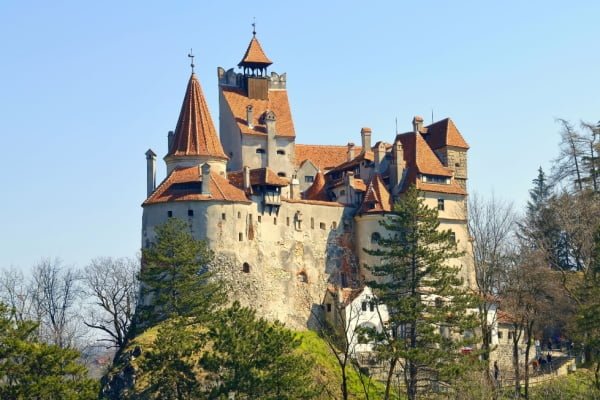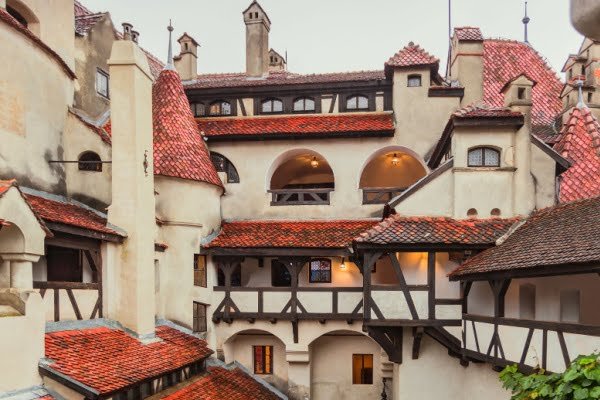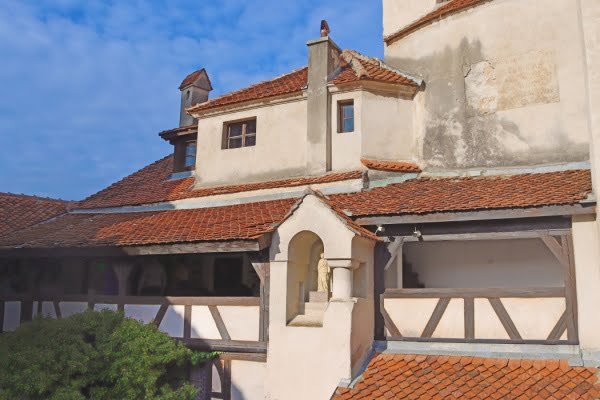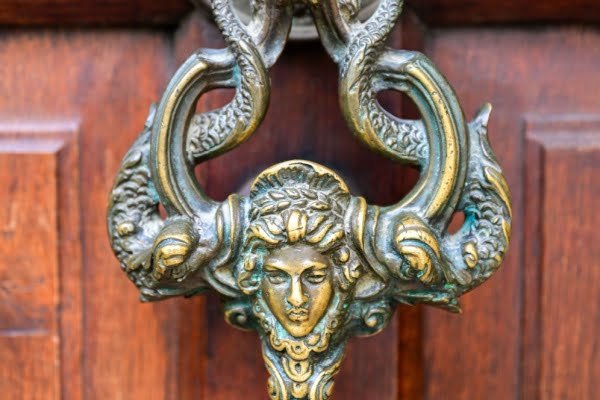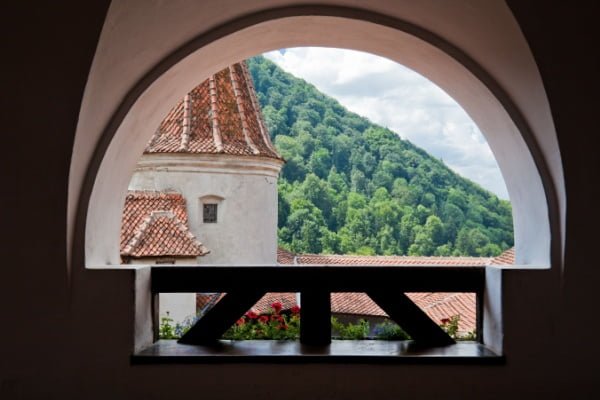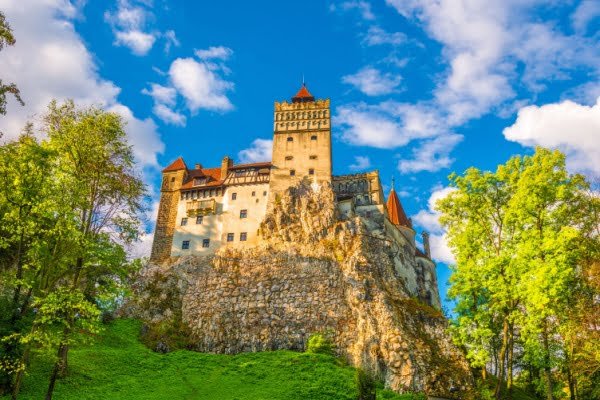History of Bran Castle
History of Bran Castle
Bran Castle, perched like a sentinel atop a dramatic cliff in Transylvania, boasts a history as captivating as its imposing silhouette. Though often inaccurately dubbed “Dracula’s Castle,” its true story stretches across centuries, weaving together threads of strategic defense, royal residence, and enduring cultural significance.
On this page, explore the captivating history of Bran Castle, a journey through time that unveils the castle’s evolution with a detailed chronological timeline and an in-depth overview. From its early origins to significant milestones, we’ll navigate the annals of Bran Castle’s past, and also take a look at the castle’s remarkable architecture.
Let’s embark on a historical odyssey, unlocking the secrets and stories woven into the fabric of Bran Castle.
Chronological Timeline of the Bran Castle History
12th Century
1211: Knights of the Teutonic Order build a wooden fortress named Dietrichstein as a border checkpoint.
1242: Mongols destroy the wooden fortress.
14th Century
1377: King Louis I of Hungary grants Saxon merchants permission to build a stone castle at their own expense. Construction begins.
Late 14th Century: Castle is completed and serves as a customs point and border defense against the Ottoman Empire.
15th – 17th Centuries
1498: King Władysław II Jagiełło strengthens the castle’s fortifications.
1599: Prince Michael the Brave captures the castle during his campaign against the Ottomans.
1690: Transylvanian nobility use the castle for meetings and as a prison.
1723: Major fire damages the castle.
18th – 19th Centuries
1836: Border changes render the castle less strategically important. It becomes a customs office and administrative center.
1888: Austro-Hungarian authorities transfer the castle to the Romanian Crown.
1920: The newly crowned King Ferdinand gifts the castle to Queen Marie.
20th Century
1920-1938: Queen Marie extensively renovates the castle, transforming it into a summer residence.
1938: Queen Marie dies, and the castle passes to her daughter, Princess Ileana.
1948: Communist government confiscates the castle and turns it into a museum.
1989: Romanian Revolution ends communist rule.
21st Century
2006: Restored castle becomes a National Museum and opens to the public.
2009: Reinstituted to the descendants of the Habsburg family, who lease it back to the Romanian state for operation as a museum.
Today
Bran Castle remains a popular tourist destination, captivating visitors with its rich history, unique architecture, and association with Dracula legend.
In-depth Overview of the History of Bran Castle
Built in the 12th century as a wooden fortress built by Knights of the Teutonic Order, Bran Castle’s early purpose was clear: guarding a crucial mountain pass against threats.
Destroyed by the Mongols in the 13th century, it rose again in the 14th century, this time a formidable stone structure built by Saxon merchants. Its transformation symbolized a shift, becoming a vital customs point and a stoic defender against the burgeoning Ottoman Empire.
Centuries witnessed the castle evolve its role. King Władysław II Jagiello bolstered its fortifications in the 15th century, while Prince Michael the Brave temporarily claimed it during his anti-Ottoman campaign in the 16th century. As borders shifted and strategic needs changed, the castle transitioned, serving as a meeting place for Transylvanian nobility and even a prison in the 18th century.
However, a significant transformation awaited in the 20th century. In 1920, Queen Marie, renowned for her love of Romanian heritage, received the castle as a gift from her husband, King Ferdinand. With an artist’s vision and boundless energy, she embarked on a remarkable renovation, breathing new life into the aging structure.
Gone were the austere military elements; in their place came vibrant colors, elegant furniture, and personal touches reflecting Queen Marie’s unique style. The castle, once a symbol of defense, became a haven for royalty and a testament to her love for Romania.
Find Bran Castle Tickets Below
Bran Castle Entry Tickets
With this Bran Castle ticket, you enjoy skip-the-line entry to the realm of a medieval stronghold, famously recognized as ‘Dracula’s Castle.’ Wander through the exquisite halls and winding corridors of this remarkable fortress, marveling at its stunning architecture.
“The ticketing experience was quick and easy. The gentleman working there was friendly fun and informative. Definitely made the visit to Bran Castle even more enjoyable. Thank you….” – Witty, Dec, 2023 [Source: GetYourGuide]
Dracula’s Castle: Entry Ticket + Guided Tour
Secure guided tour with an entry ticket to Bran Castle for a guided exploration of the infamous “Dracula’s Castle”. Accompanied by a multilingual expert guide, traverse the mystical thresholds of this enchanting fortress, gaining insights into the captivating history of its primary inhabitant, Vlad III Dracula.
“Very insightful experience, loved the energy of our guide, Jack! If you ever visit the Castle, and you’re looking for a guide, ask for Jack” – David, Ireland, Jan, 2024 [Source: Tiqets]
Bucharest: Dracula’s Castle, Peles Castle, & Brasov Old Town
Embark on a captivating journey from Bucharest with this “Transylvanian Trio” ticket with visits to Brasov’s Old Town, the enchanting Peles Castle, and Bran Castle, famously associated with Dracula. Hotel pick up and transport is included in the 12-hours full day trip.
“Serban Riga was the most amazing tourist guide in this planet. [… ]The trip was a normal tourist one but the guide made all the difference. I recommend sooo much, you will have a lot of fun and learn a lot about Romania and their real vampires.” – Constanza, Feb 2024 [Source: GetYourGuide]
Bucharest: Day Trip to Dracula Castle, Peles Castle & Brasov
Discover Transylvania’s allure on the “Dracula’s Legacy” day trip from Bucharest, unraveling Vlad the Impaler’s tales at Bran Castle—the inspiration for Dracula’s lair. Immerse yourself in medieval Brasov and enjoy the scenic beauty of Transylvania, along with the opulence of Peles Castle in Sinaia, the Pearl of the Carpathians.
“Amazing day out and great experience. The pickup was easy and well located […]. Visiting the castles was great with a guided tour and a mix of free time to further explore. […]Definitely a worthwhile experience and a brilliant company to do it with.” – Aaron, Feb 2024 [Source: GetYourGuide]
From Brasov: Tour of Castles and Surrounding Area
Embark on a 7-hour day tour exploring the captivating castle sites near Brasov in Transylvania, Romania. Enjoy hassle-free transportation and expert guidance to delve into the rich history, marvel at breathtaking views, and unravel the intricate architecture of Romanian churches and monasteries.
“The tour was well organized! Spent enough time to all Castles mentioned in the schedule and there was also free time in each place Special credits to our tour guide! He was really kind, very helpful […] Highly recommended!!” – Elenah, Jan. 2024 [Source: GetYourGuide]



